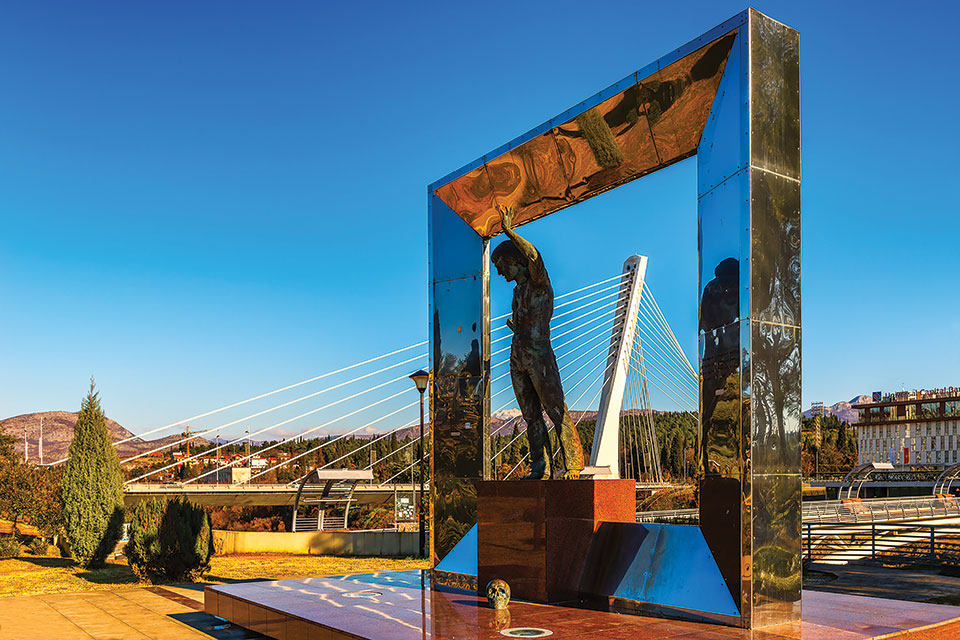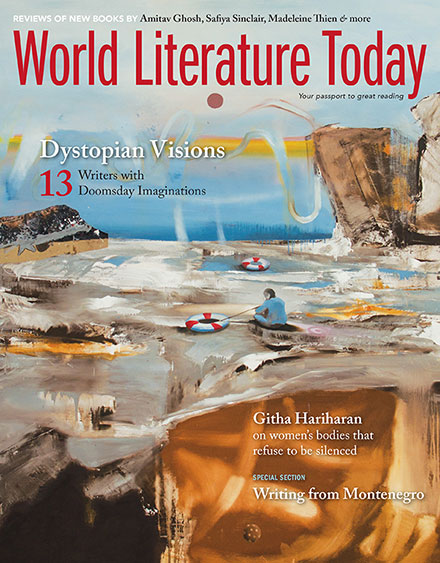From Turmoil and Diversity: Contemporary Montenegrin Prose Writing

Nestled between Croatia, Bosnia-Herzegovina, Serbia, Kosovo, and Albania, Montenegro (“black mountain”) is slightly smaller than the state of Connecticut and has a population of around 620,000. The country has been independent since 2006, when it seceded from the last manifestation of rump Yugoslavia (“Serbia and Montenegro”) after a narrowly won referendum.
Despite efforts at industrialization in the decades following the Second World War, Montenegro remained one of the least-developed regions of former Yugoslavia. The northern half of the country is mountainous and has a continental climate. Agriculture and manufacturing are concentrated in the flatter, central belt near the capital city, Podgorica [pronounced pod-goh-ree-tsa], while the south has a Mediterranean climate and cities dating back to the Venetian period and earlier.
With 293km of Adriatic coast, tourism is the most important source of income. Most of the country’s industries are in decline (aluminum smelting) or have collapsed entirely (heavy machinery manufacturing, salt production). Economic crisis, corruption, crime, and brain drain are ongoing problems. Most mainstream discourses in Montenegro and the neighboring countries say that society is “in transition” (the background notion being that of a progression from evil socialism to radiant capitalism). But given the complex situation they are in, many Montenegrins ask themselves: transition to what?!
Despite these difficulties, Montenegro has a lively and vibrant cultural scene centered in Podgorica but also present in the former royal capital, Cetinje [tseh-tin-yeh], as well as Budva and Kotor on the coast.
The majority of the population is comprised of Montenegrins, Serbs, and Bosniaks, who speak closely related variants of what we may call Serbo-Croat (the main language of former Yugoslavia). There are also several minorities, particularly Albanians and Romanies. The Cyrillic script is still in use but is increasingly being sidelined by the Latin alphabet.
Arguably the best-known Montenegrin writer was Petar II Petrović Njegoš (1813–51), prince-bishop of Montenegro, whose dynasty carved out a de facto independent principality within the Ottoman empire in the nineteenth century. His epic poem The Mountain Wreath, written in the vernacular, is known and loved by many. At the same time, it cannot be considered a work of purely national, Montenegrin literature because it addresses broader political and cultural issues that overarch any narrowly defined Montenegrin reality. This is an interesting trait, which we shall return to in a moment.
Twentieth-century Montenegrin writers, or those with a Montenegrin element to their identity, included Danilo Kiš (1935–89), best known for his books A Tomb for Boris Davidovich and The Encyclopedia of the Dead, and Borislav Pekić (1930–92), whose Time of Miracles and How to Quiet a Vampire have been translated into English.
Promising Montenegrin writers of recent years are Andrej Nikolaidis and Ognjen Spahić—winners of the EU Prize for Literature in 2011 and 2014, respectively; novelist, poet, and short-story writer Balša Brković; and Dragan Radulović. All four of these writers have fielded stories for the Best European Fiction anthology published by Dalkey Archive Press. Together with a handful of other authors who have won acclaim in the Serbo-Croat-speaking region, they have sometimes been dubbed the “Montenegrin New Wave” of prose writing.
Three of Nikolaidis’s short novels (The Coming, The Son, and Till Kingdom Come) have been published in English by London-based Istros Books, as has Spahić’s “forgotten gem” Hansen’s Children, which won several regional literary prizes but failed to make much impact internationally due to the vagaries of reception.
In his tale in this issue of WLT about a writer and his creative crises, “White Dogs,” Milovan Radojević (b. 1960) touches on the ex-Yugoslav wars of the 1990s, a traumatic part of the consciousness of many Montenegrins. The story is set in the Serbian capital of Belgrade, which reflects the close links many people in Montenegro still have with Serbia, despite their country’s secession from the joint state.
The story “Koko and Raden,” by Brano Mandić (b. 1979), explores the lives of a couple, both well-meaning social-media professionals, who are tied up in the hype and superficiality they themselves produce. After helping alert the country to a serious earthquake (Montenegro is seismically very active and suffered a severe quake in the year Mandić was born), the protagonists leave the country to live in Vienna for a time, hoping the change of scene will revitalize their relationship and allow Koko to get pregnant. It should be added that Montenegro has a very low birth rate, in addition to an exodus of the young and well-educated population.
The latter issue is also a theme in the story “Leaving,” by Slađana Kavarić (b. 1991), in which two young people are torn between wanting to immigrate and find a perspective abroad and not wanting to lose the modicum of security and familiarity they have at home, despite the mess the country is in. We are glad to present this piece by a young woman writer because Montenegro’s literary scene is heavily male-dominated. Among the female voices that have gained a degree of attention in recent years are two novelists, who also translate their own work into English: Ksenija Popović (Boy from the Water and A Lullaby for No Man’s Wolf) and Olja Knežević (From London, with Love). The poets Tanja Bakić and Lena Ruth Stefanović have received attention at home and abroad and also deserve mention in this context.
Having followed Montenegrin writing closely for the last ten years, I still find it hard to put my finger on a common, unifying feature. Given the turmoil of the past and present as well as the ethnically diverse reality most Montenegrins live in, perhaps it is precisely a certain openness, eclecticism, and variability in perspective that characterize many of these writers. My impression is that they are less inclined to dwell on narrowly national themes and trends than their peers in Croatia or Serbia, for example.
Together, the three pieces in this issue of WLT give a diverse insight into contemporary Montenegrin prose writing.











